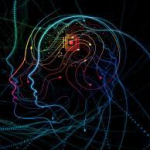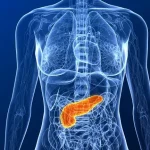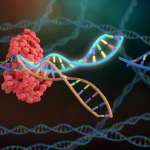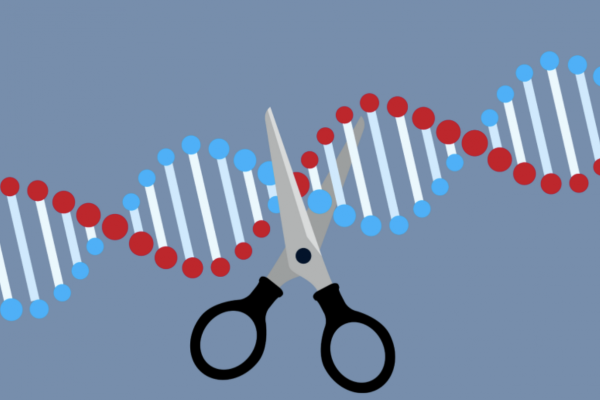by: Kathyna Thai
The Fore tribe in Papua New Guinea practiced cannibalism of the deceased as a way to “return the life force among the living”. The first documented cases of a disease relating to cannibalism erupted here in the 1950s. Individuals experiencing uncontrollable tremors, painful headaches, and unsteady gait were reported as having “Kuru”. Dr. Stanley Prusiner, professor of Neurology and Biochemistry and director of the Institute of Neurodegenerative Diseases at UCSF, found the cause of these tremors and coined it “prions” (proteinaceous infectious particle). Prions are associated with various neurological diseases such as Amyotrophic Lateral Sclerosis (ALS), Multiple System Atrophy (MSA), and Parkinson’s Disease.
For a long time, it was commonly perceived that all prions were foreign, exogenous proteins that ubiquitously caused problems for the host. It turns out this is not the case. Prions exist in two different conformations: normal and abnormal. Pathogenesis occurs when normal, endogenous prion proteins (PrPC) fold into an abnormal shape (PrPSc). PrPSc gain different properties from its precursor conformation and can recruit neighboring PrPC to undergo an abnormal conformational change resembling the PrPSc conformation. Eventually these PrPSc accumulate and cause neurodegenerative diseases. PrPSc is a rare and debilitating disease with no current cure. In 2010, Dr. Adriano Guzzi and his lab found evidence for prions existing in a harmless conformation (PrPC conformation) that helped to maintain the peripheral nervous system via cell-to-cell adhesion and myelination of nerves. In the July 20th edition of the Journal of Virology, Dr. Prusiner’s lab demonstrated that they successfully developed a mammalian model that will hopefully aid in accelerating this process of understanding prions at a more sophisticated level, such that therapeutic drugs and vaccines can be developed.
Prions are implicated in many neurological diseases and exist in many different forms and different hosts. In addition to Kuru, Bovine Spongiform Encephalopathy (BSE) is another disease instigated by prion accumulation, and is found in cows eating infected remains of other cows. BSE in cows results in lack of motor coordination, nervousness, and abnormal posture. The human analog of BSE is Variant Creutzfeldt-Jakob disease (vCJD), and can occur in individuals who have consumed beef contaminated with BSE. Most strains are resistant to destructive methods such as heating past 450 degrees F, freezing, burying for decades and exposure to proteinase K. Transmission of prions is most effective within the same species -compared to across species- but BSE is an exception and can cause disease in humans who consume infected beef.
Before Dr. Prusiner’s recent publication, studying prions in guinea pigs was difficult due to the prion’s long required incubation period prior to manifested symptoms. Although there is currently a high rate of successful transmission, it takes 350 days for vCJD and 450 days for BSE to exhibit any neurological signs in guinea pig models.
Dr. Prusiner and his lab at UCSF engineered three groups of transgenic mice carrying both guinea pig and mouse prion proteins attempting to shorten the incubation period. Each group was subjected to varying degrees of guinea pig PrPC (GPPrP) expression. For example, Group 1 had overexpressed levels of GPPrP ranging from 1x, 1.5x, 2.5x amount of GPPrP compared to that of wild type guinea pigs (the control). Each transgenic mouse was injected with sporadic Creutzfeldt-Jakob Disease (sCJD) to find which group had the shortest incubation period to development of sCJD. Group 3 had the highest expression of GPPrP and the shortest incubation period. The rest of the experiment performed focused solely on Group 3. This line of mice were separated into three groups and each group was subjected to either BSE, sCJD, or vCJD injection. Daily routines of these transgenic mice were monitored and recorded three times a week for any neurological signs. Once neurological signs and symptoms appeared, mice were humanely put to death via CO2 inhalation. Neurologic tissue samples were collected from each mouse and analyzed under a light and fluorescence microscope. From there, Dr. Prusiner’s lab analyzed the condition of the brain tissue after infection with the prions. The affected brain samples were characterized as having depositions of PrPSc and hole-like appearances which were both absent in unaffected brain samples.
Transgenic mice with guinea pig proteins shortened the incubation period of vCJD and BSE to 199 days and 210 days, from 350 days and 450 days respectively. Importantly, the study of prions will be sped up by this shorter incubation period. Also, among the three types of prions used, both BSE and vCJD effectively transmitted to transgenic mice. Dr. Prusiner’s lab concluded that usage of transgenic mice is an effective way to transmit both BSE and vCJD, paving the way toward future prion research with this model.
Previously, several animal models attempted to model prions, but their long incubation period hindered progress in the field. Since most drugs developed and tested on mice fail to pass clinical trials in humans, shortening the experiment time is an effective way to increase the speed of research and thus hopefully increase the likelihood of effective pharmaceutical disease intervention. Therefore, this engineering of transgenic mice possessing a shorter incubation period ultimately enables researchers to study prions in a timely manner. Researchers studying prions quicker can create tests to detect prions and aid diseased patients more quickly. Not only would studying prions help patients directly afflicted with them, it can also model other neurodegenerative diseases such as Alzheimer’s Disease and Parkinson’s Disease. Now, Dr. Giles from UCSF Sandler’s Neuroscience Department is confident that “the real hope of getting drugs into people is now within reach” and comments “that’s what it is all about in the end” – a powerful statement echoing hope for future research and treatment in the prion field.





